Computer und IT

Designforschung und KI
Künstliche Intelligenz ist weit mehr als eine simple Technologie – sie prägt Bilder, Narrative und unsere ästhetisch-symbolische Kultur. Dieser Band zeigt erstmals systematisch, wie Designforschung auf die Dynamiken generativer Systeme reagiert und sich gleichzeitig positioniert: kritisch, experimentell und interdisziplinär. Von visueller Kommunikation über Interfacegestaltung bis hin zu spekulativen Entwürfen untersuchen die Beiträge, wie KI Bedeutung erzeugt, Gestaltungsnormen transformiert und gesellschaftliche Machtverhältnisse neu ordnet. Im Zentrum steht das Konzept des Techno-Imaginären: KI als kulturelles Dispositiv jenseits technischer Funktionalität. Ein unverzichtbares Buch für alle, die Gestaltung, Medien und Technologie im Zeitalter algorithmischer Systeme neu denken wollen. Einleitung.- Designforschung und KI.- Visual Communication as an Experimental Ground of the Visual.- Anthropomorphe Interfaces.- Der Latent Space als kulturelles Archiv.- Augmented Creativity.- Künstliche Intelligenz in der Designlehre.- Partizipative Designpraktiken für verkörperte Künstliche Intelligenz.- Manual and Artificial Intelligence.- KI als Designmedium?.- Archives Digitally Reloaded.- Taboo. Überbrückung von Design, KI und der Politik der Materialist durch Leigh Bowers Vermächtnis.- Gute Zeiten für schlechtes Design.
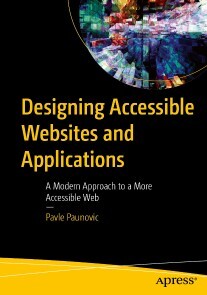
Designing Accessible Websites and Applications
Building websites with accessibility in mind is imperative for today’s developers. Accessibility encompasses everything from keyboard navigation and screen reader compatibility to color contrast and error handling, ensuring an inclusive experience for individuals with disabilities affecting vision, hearing, mobility, or cognitive functions. Designing Accessible Websites and Applications guides you through the entire process of creating accessible websites, covering topics like semantic HTML, ARIA roles, implementing keyboard navigation, and designing for users with color blindness. For example, error states or buttons should not rely solely on the color red and success messages need more than just green checkmarks or buttons to be understood by everyone. Whether working on a website, a blog, or online store, applying these principles will help you design truly user-friendly and accessible websites. This book will teach you how to validate color contrast, structure HTML, write accessible JavaScript, and ensure accessible playback of video and audio content. It also provides insights into creating accessible forms and leveraging modern frameworks like React, Vue, and Angular. You Will: Learn how to use ARIA attributes to enhance navigation and interaction for users relying on screen readersDiscover how to use color effectively for used with impaired vision and color blindness, moving beyond color cues to communicate error and success states effectivelyGain insights into developing accessible web applications using modern front-end frameworks like React, Vue, and Angular, while adhering to accessibility principles This book is for: Web developers and designers, UI Developers, freelancers and business owners who need to build and design their own websites or app and need to adhere to accessibility best practices and regulations. Chapter 1: Semantic HTML.- Chapter 2: ARIA.- Chapter 3: Colors and Accessibility.- Chapter 4: Accessible Images.- Chapter 5: Accessible Videos and Audios.- Chapter 6: Accessible Forms.- Chapter 7: SPA Application and Modern Front-End Frameworks and Accessibility.

KI in der Film- und Videoproduktion
Dieses Einstiegsbuch zeigt Ihnen, wie Sie die Revolution von KI in der Film- und Videoproduktion für sich nutzen können – ohne Vorkenntnisse und mit sofort anwendbaren Ergebnissen. Lernen Sie, wie Sie mit einfachen Text-Prompts beeindruckende Videos erstellen, Charaktere zum Leben erwecken und professionelle Effekte generieren. Der Autor hat über 20 führende KI-Tools systematisch getestet und bewertet – von Sora und Google Veo 3 bis zu innovativen Audio-Lösungen. Jedes Kapitel kombiniert Fachwissen mit praktischen Workflows und konkreten Anwendungsbeispielen. QR-Codes führen Sie zu ergänzenden Video-Tutorials. Diese 216 Seiten werden Ihre Arbeitsweisen revolutionieren!Sie erhalten Überblickswissen zu folgenden Aspekten:Text-zu-Video-Prompting – Professionelle Formulierungstechniken für realistische VideoergebnisseKI-Plattform-Vergleich – Sora, Kling AI, Runway ML, Veo 3 und weitere Tools im direkten TestBildgenerierung für Filme – Midjourney, Adobe Firefly und Leonardo AI für cinematische BilderBild-zu-Video-Animation – Standbilder mit KI zum Leben erweckenLippensynchronisation – Charaktere realistisch sprechen und singen lassenKonsistente Charaktere – So geht's: Figuren durch ganze Filme hindurch einheitlich darstellenKI-Spezialeffekte – Professionelle Visual Effects ohne teure Software (im Überblick)Stimmen-Cloning – Realistische Text-to-Speech und Voice-Cloning-TechnikenKI-Musikproduktion – Soundtracks und Filmmusik automatisch generierenVideoschnitt mit KI – KI-Funktionen in Adobe Premiere Pro, Final Cut und DaVinci Resolve optimal nutzenGeräusch-Design – Foley-Effekte und Atmosphären per KI erstellen»Ihr nächstes Video wird Sie selbst überraschen.«Thomas Foster ist Musikproduzent, Autor und YouTuber aus Salzburg. Mit seiner Firma Foster Kent produziert er seit über 30 Jahren Jingles und Musik für internationale Radio- und TV-Sender wie RTL, SWR3, NDR2 und News Nation (USA). Auf seinem YouTube-Kanal Thomas Foster Sound & Vision informiert er über Musikproduktion, KI-Tools und Videotechnik.

Apple Watch (2. Auflage)
Möchten Sie das Beste aus Ihrer Apple Watch herausholen? Dann ist diese leicht verständliche Anleitung der richtige Begleiter. Schritt für Schritt werden Sie durch alle wichtigen Funktionen Ihrer Apple Watch geführt. Ob Anrufe, SMS, Kalender, Wetter oder Wecker - mit diesem Buch haben Sie alles im Griff.Aber das ist noch nicht alles! Die Apple Watch hilft Ihnen auch dabei, gesund und aktiv zu bleiben. Steffen Bien geht ausführlich auf die Gesundheitsfunktionen und das Sport- Tracking ein. So können Sie Ihre Fitness optimal im Blick behalten und Ihre Ziele effektiv verfolgen. Für alle aktuellen Modelle geeignet. Aus dem Inhalt: Der Start mit der Apple WatchMachen Sie sich mit der Apple Watch vertrautDie Apple Watch im Alltag: Anrufe, SMS, Wetter, Kalender, Navigation, Apple PayIhr Soundtrack für unterwegsDer App Store – unbegrenzte MöglichkeitenDie Apple Watch als GesundheitscoachDie Health App – Ihre GesundheitszentraleÜberwachung Ihrer HerzgesundheitBesser schlafen mit der Apple WatchSport mit der Apple Watch

The Data Lakehouse Revolution
We are racing toward a new kind of AI—faster, smarter, and more connected than ever. At the heart of it is the Data Lakehouse, and Databricks is the engine powering the transformation. Whether you're a data scientist training models, an engineer scaling pipelines, or an architect modernizing your stack, this book gives you what you need to stay ahead. Inside, you'll understand how to unlock the full potential of Machine Learning and Generative AI (GenAI) using Databricks—no fluff, just real tools, real strategies, and real results. From MLFlow and AutoML to Unity Catalog, Retrieval Augment Generation (RAG), and Vector Search, you'll get a complete blueprint for building intelligent systems that actually work in production. With step-by-step labs, industry case studies, and expert tips from someone who's lived through the entire evolution of enterprise AI, this book is your guide to mastering what's next. If you're serious regarding building AI that matters, this is where your journey begins. What You'll Learn Build full-stack ML and GenAI solutions on DatabricksTrain and track models with MLFlow, AutoML, and tuning strategiesSecure and govern data with Unity CatalogApply explainable, ethical AI techniquesDeploy and monitor ML models in real-world pipelinesUse RAG and vector search to power GenAI applicationsGain confidence with hands-on labs and real enterprise use cases Who This Book Is For Azure administrators, data architects, and data engineers Chapter 1: Getting Started with Databricks.- Chapter 2: Introduction to Machine Learning and Data Lakehouses.- Chapter 3: Data Preparation and Management.- Chapter 4: Building Machine Learning Models.- Chapter 5: AutoML and Model Optimization.- Chapter 6: Deploying Machine Learning Models.- Chapter 7: Advanced Topics in Machine Learning.- Chapter 8: Lakehouse AI and Retrieval-Augmented Generation (RAG).- Chapter 9: Conclusion and Next Steps.

CompTIA CySA+ Certification Companion
This book covers all topics and requirements of the CompTIA CySA+ certification exam. It will allow readers to easily understand the concepts, information, and skills needed to obtain the associated intermediate- to advanced-level certification. CompTIA CySA+ is a global certification that focuses on defensive security, such as cybersecurity incident response, security operations, vulnerability assessments, and more. It is important as the demand for intermediate to advanced cybersecurity professionals is higher now than ever. This particular certificate is typically recommended for the individual to have a baseline understanding of the Information Technology and Cybersecurity world prior to sitting this examination. The book is designed to follow the core requirements of the CompTIA CySA+. It has been specifically written to follow the guidelines of the exam, while also incorporating other useful topics that will allows the readers to better understand the material. What You Will Learn: How to identify and manage cybersecurity threats and vulnerabilities, with an emphasis on tools, techniques, and real-world applications.How to monitor, detect, and tools used in security operations, providing both technical details and strategic considerations.How to respond to, investigate, and recover from security incidents with a focus on procedural knowledge and hands-on incident handling.How to explore tools, architectures, and designs for building secure networks and infrastructures.Methods for managing and securing user identities and access to systems.How to use threat intelligence to recognize and respond to emerging threats effectively. Who This Book is for: This book is for all readers that are interested in the CompTIA CySA+ examination. Chapter 1: Introduction to CySA+.- Chapter 2: Threat and Vulnerability Management.- Chapter 3: Security Operations and Monitoring.- Chapter 4: Incident Response.- Chapter 5: Risk Management and Mitigation.- Chapter 6: Security Architecture and Tools.- Chapter 7: Identity and Access Management.- Chapter 8: Threat Intelligence and Analysis.- Chapter 9: Compliance and Security Governance.- Chapter 10: Final Review and Exam Preparation.

Künstliche Intelligenz in der Marketingabteilung
Das Buch untersucht den aktuellen Einsatz künstlicher Intelligenz in Marketingabteilungen. Basierend auf einem entwickelten Prozessmodell und einer quantitativen Befragung von Fachexpert*innen werden Nutzungshäufigkeit, Anwendungsfelder sowie Chancen und Herausforderungen analysiert. Abschließend werden konkrete Handlungsempfehlungen vorgestellt, um die Nutzung von KI im Marketing gezielt zu fördern. Einleitung.- Theoretische Grundlagen.- Zwischenfazit.- Empirische Untersuchung.- Auswertung der Forschungsergebnisse.- Diskussion.- Fazit.

Enterprise Guide for Implementing Generative AI and Agentic AI
Generative AI and Agentic AI together are revolutionizing the technology landscape, with profound and far-reaching impacts across industries. Organizations are increasingly adopting these technologies to drive innovation, enhance unstructured content management, and improve problem-solving capabilities. With Agentic AI, enterprises are moving towards the development of intelligent systems that can plan, reason, and act with autonomy. While early proof-of-concepts (POCs) demonstrated the potential of these technologies, the current shift is toward responsible and scalable production implementations that leverage both generative and agentic capabilities. This book begins by guiding you through the technological evolution of AI, from early machine learning to today’s large language models (LLMs) and agentic systems. It then explores a wide range of use cases across industries, highlighting how LLMs can support decision-making, and how Agentic AI enables dynamic, collaborative systems that act with autonomy and intent. This is followed by Design Patterns across the lifecycle of AI solution development, deployment and monitoring. Readers will then gain insights into the methodologies for developing and deploying Generative and Agentic AI solutions at an enterprise level. A featured implementation demonstrates how Agentic AI can be effectively put into action. The book also introduces essential concepts such as MLOps, LLMOps, and Responsible AI principles which are critical for transitioning the AI solutions from experimentation to production. These principles ensure that AI deployments are scalable, secure, ethical and compliant. The book concludes with key takeaways and best practices for developing, evaluating, deploying and scaling AI applications responsibly and effectively within enterprise settings. You Will: Understand key design patterns to develop, deploy and monitor a Generative AI solution effectively.Learn how to develop and implement a production-ready Agentic AI use case.Discover best practices for building scalable, secure, and enterprise-grade AI solutions.Understand how to assess and mitigate risks using Responsible AI principles and LLMOps best practices. This book is for : Enterprise Software Engineers and Architects PART – I.- Chapter 1: Introduction: Evolution of AI and Large language models (LLM). PART – II.- Chapter 2: Generative AI in Business. PART – III.- Chapter 3: Design patterns for developing enterprise GenAI applications. Chapter 4: Introduction to Agentic.- Chapter 5: End to end implementation of a practical Use case. Chapter 6: Evaluation and Deployment. PART – IV.- Chapter 7: Responsible AI & Risk framework.- Chapter 8: Conclusion and best practices.

.NET 10 Revealed
Announcing the first look at .NET 10, the most comprehensive update to the Microsoft framework in years. The secrets to robust, efficient, and scalable applications are now in your grasp. Establish a solid foundation in C# fundamentals, progressing to more complex topics such as Blazor, MAUI, and new security updates. Be the first to master the new updates recently added to the framework with .NET 10, including ASP.NET Core for web development and Entity Framework Core for data access. After reading this book, developers will not just attain greater technical understanding but also a first-principles understanding of the concepts behind the .NET ecosystem. A focus on practical applications sets this book apart. Each concept leads into hands-on examples and projects, allowing readers to apply their learning immediately. With its comprehensive coverage and up-to-date content, .NET 10 Revealed is an essential resource for both beginners looking to start their journey in .NET development and experienced programmers seeking to update their skills to the latest version of the framework. What You Will Learn · Dive into the new features with .NET 10 Framework, including new libraries, .NET Core runtime, parallel programming, and more · Gain an understanding of ASP.NET Core elements like building web APIs, MVC architecture, and Entity Framework Core. · Master Blazor with server-side Blazor, WebAssembly Blazor, and more · Dig into language enhancements in C# 14, performance improvements in .NET 10, and migration strategies from earlier versions Who This Book Is For This book is for intermediate-level developers who want to learn what’s new with .NET 10. Chapter 1: Introduction.- Chapter 2: Introduction to .NET.- Chapter 3: The Journey of C#: A Developer’s Perspective- Chapter 4: Modern APIs with ASP.NET Core 10.- Chapter 5: Blazer in .NET 10 – Modern Web UI, Productivity, and Experience.- Chapter 6: Unlocking .NET MAUI’S Potential.- Chapter 7: Performance and Optimization in .NET 10.- Chapter 8: ER Core and .NET Libraries.- Chapter 9: Migration and Compatibility.- Chapter 10: The Future of .NET.

Projekt Phoenix - Die Graphic Novel, Band 2
Band 2 des DevOps-Wirtschaftsromans als Graphic Novel¶•Unterhaltsam und spannend: der Bestseller »Projekt Phoenix« jetzt im visuellen Format¶•Illustriert von Comic-Artist Mike Collins, der fast alle berühmten Comicfiguren wie X-Men, Batman, Spider-Man oder Superman gezeichnet hat¶•Wie geht es mit »Parts Unlimited« weiter? Das Überleben des Unternehmens steht immer noch auf dem Spiel. Bill muss sich mit schmerzhaften Wahrheiten über technische Schulden, organisatorische Dynamiken und mit den »Drei Wegen« auseinandersetzen¶•Erscheint in drei Bänden¶Die Krise bei Parts Unlimited ist noch lange nicht vorbei: Schaffen Bill und sein Team es rechtzeitig, ihre Umstrukturierungen abzuschließen? Und was werden sie dabei lernen? Band 2 der Adaption des beliebten IT-Romans setzt den spannenden Schlagabtausch zu IT-Management, DevOps und der digitalen Transformation aus Band 1 fort. Durch lebendige Illustrationen und packende Dramatik werden wichtige Lektionen über Flow, Feedback und kontinuierliche Verbesserung vermittelt, die alle ansprechen, die Veränderungen in ihrem Unternehmen bewirken wollen.

Proactive Cyber Threat Intelligence
This book explores innovative methods to enhance cybersecurity by leveraging official and unofficial information sources on the web. While traditional approaches like Cyber Threat Intelligence (CTI) and Security Information and Event Management (SIEM) rely on past breaches, this work emphasizes a proactive stance, utilizing Open Source Intelligence (OSINT) to predict and prepare for emerging threats. Drawing from crisis informatics and data mining, the research introduces automated approaches for collecting, enriching, and analyzing cybersecurity information across diverse web sources, providing security teams with tools to identify emerging threats while reducing manual workload. For security professionals and researchers, this work demonstrates how automation can enhance human expertise in cybersecurity, paving the way for more robust and proactive threat detection. Introduction.- Research Background and Field.- Research Methodology and Context.- Findings.- Discussion.- The Notion of Relevance in Cybersecurity: A Categorization of Security Tools and Deduction of Relevance Notions.- A Domain-Adapted Language Model for the Cybersecurity Domain.- Bandit on the Hunt: Dynamic Crawling for Cyber Threat Intelligence.- Navigating the Shadows: Evaluating the Dark Web for Cyber Threat.- OVANA: An Approach to Analyze and Improve the Information Quality of Vulnerability Databases.- Common Vulnerability Scoring System Prediction based on Open Source Intelligence Information Sources.- Reducing Information Overload: Because Even Security Experts Need to Blink.
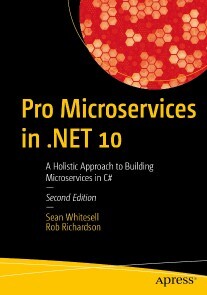
Pro Microservices in .NET 10
Learn how to design, build, test, deploy, and monitor microservices using .NET 10. Microservices is a pattern of separating software into small, reusable components to solve specific problems. Each microservice can be independently built, deployed, and scaled. This pattern provides enterprise grade durability and scale to meet complex business goals and customer needs in enterprise systems. While the return is valuable and the concept straightforward, applying it to an enterprise development effort is far more complicated. Where do you start? How do you find the seams between the components? And once you have all the services, how do you deploy and scale them to meet the durability and performance needs of the organization? Pro Microservices in .NET 10 will introduce you to all that and more. The authors get you started with an overview of microservices and other development patterns, event storming, domain-driven design, and the options for developing in ASP.NET. You will use that foundational information to build a reference application throughout the book, exploring both synchronous messaging with HTTP, gRPC, and asynchronous messaging with a service bus. From there, you will create your first microservice using C# and .NET 10, test it using unit and integration tests, and package it into a Docker container. You’ll deploy the container to various Azure services including Kubernetes, Azure Container Apps, App Service, Azure Functions, and KEDA. You will also learn about communication styles, decentralizing data, and testing microservices. Finally, you will learn how to keep services healthy using OpenTelemetry for logging, Aspire for local development, and Azure Application Insights for production. What You Will Learn Build a foundation of basic microservices architecture designFollow an example of using event storming and domain-driven design to understand the monolithic application modified for microservicesLearn about ASP.NET hosting options including MVC, Razor Pages, Web API, and Minimal APIsCall microservices using RPC and messaging communication styles via HTTP and gRPCLearn about asynchronous communication using an enterprise service busComprehend decentralizing data and handling distributed transactionsUnderstand via detailed commands how Docker is used to containerize applicationsLearn to deploy microservices to Kubernetes, Azure Container Apps, App Services, and Azure FunctionsLeverage OpenTelemetry to make your microservices more robust Who This Book Is For This book is for professional developers and software architects looking to level up their skills. Readers should have basic familiarity with Visual Studio or VS Code and experience with .NET, ASP.NET Core, and C#. New to This Edition In this new and updated volume, the authors explore new features from .NET 10 and C# 14 that launched in November 2025, making it easier than ever to design, architect, build, test, and deploy microservices. These enhancements include testing patterns, Docker, Kubernetes, Azure deployment, YARP, and Aspire. Chapter 1: Introducing Microservices.- Chapter 2: Other Software Patterns.- Chapter 3: Searching for Microservices.- Chapter 4: ASP.NET is a Great Place for Microservices.- Chapter 5: Synchronous Communication with Microservices.- Chapter 6: Asynchronous Microservice Messaging.- Chapter 7: Decentralizing Data.- Chapter 8: Testing Microservices.- Chapter 9: Deploying Microservices.- Chapter 10: Healthy Microservices.
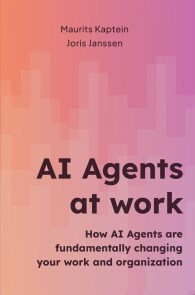
AI Agents at work
AI Agents are coming, and it may happen faster than you think. This book explains what AI Agents are, what the risks are, and what opportunities they bring. We show you how to prepare yourself and your organization for the arrival of AI Agents. We, Maurits and Joris, first met in 2008 at Stanford University, where we were both working on our PhDs in AI. In recent years, we have once again immersed ourselves in AI Agents—reading, experimenting, and building our own. And yes, the hype is big. But behind the hype lies a future that will fundamentally change how we think about work. And of course, this book itself is also a collaboration with several AI Agents. In this book, you'll learn: How AI Agents really work (without the buzzwords) Which risks you need to manage (hallucinations, privacy, regulation) How your organization can develop AI maturity Successful real-world cases and future scenarios

Advanced Forecasting with Python
Advanced Forecasting with Python, Second Edition, is a comprehensive and practical guide to mastering modern forecasting techniques using Python. Designed for data scientists, analysts, and machine learning practitioners, this updated edition bridges the gap between classical forecasting models and cutting-edge, AI-powered techniques that are reshaping the field. The book begins with foundational models like AR, MA, ARIMA, and SARIMA, offering intuitive and mathematical explanations alongside hands-on Python implementations. It then expands into multivariate models (VAR, VARMAX), supervised machine learning (Random Forests, XGBoost, LightGBM, CatBoost), and deep learning architectures such as LSTMs, NBEATS, and Transformers. Each chapter not only teaches the theory and code but also tracks model performance using MLflow, enabling efficient benchmarking and experimentation management. The second edition stands out for its extensive new content. Readers will now explore Orbit by Uber, AutoGluon by AWS, Prophet by Meta, Microsoft Azure AutoML, Google GCP AutoML, and TimeGPT by Nixtla, equipping them with the latest tools from top cloud providers. These additions make sure that readers stay current in an ever-evolving landscape. Moreover, the new chapters highlight practical deployment strategies and trade-offs between performance, explainability, and scalability. Whether you are just beginning your forecasting journey or seeking to enhance your expertise with state-of-the-art tools and cloud-based solutions, this book offers a rich, hands-on learning experience. With step-by-step Python examples, detailed model insights, and modern forecasting workflows, it is an indispensable resource for staying ahead in the realm of predictive analytics. You Will: Build robust forecasting solutions using PythonGain both intuitive and mathematical insights into traditional and cutting-edge forecasting models Master model evaluation through cross-validation, backtesting, and MLflow-based trackingLeverage cloud-based platforms and Model-as-a-Service tools for scalable forecasting deployments Who this book is for: This book is ideal for data scientists, analysts, and ML practitioners working on real-world forecasting problems. It suits both intermediate learners and experienced professionals looking to master state-of-the-art forecasting techniques. PART I: Machine Learning for Forecasting.- Chapter 1: Models for Forecasting.- Chapter 2: Model Evaluation for Forecasting.- Chapter 3: Model Management and Benchmarking using MLflow.- PART II: Univariate Time Series Models.- Chapter 4: The AR model.- Chapter 5: The MA model.- Chapter 6: The ARMA model.- Chapter 7: The ARIMA model.- Chapter 8: The SARIMA model.- PART III: Multivariate Time Series Models.- Chapter 9: The SARIMAX model.- Chapter 10: The VAR model.- Chapter 11: The VARMAX model.- PART IV: Supervised Models.- Chapter 12: The Linear Regression.- Chapter 13: The Decision Tree Model.- Chapter 14: The kNN model.- Chapter 15: The Random Forest.- Chapter 16: Gradient Boosting with XGBoost, LightGBM, and CatBoost.- Chapter 17: Bayesian Models with pyBATS.- PART V: Neural Networks.- Chapter 18: Neural Networks.- Chapter 19: RNNs using SimpleRNN and GRU.- Chapter 20: LSTM RNNs.- PART VI: Black Box and Cloud Based Models.- Chapter 21: The NBEATS model with Darts.- Chapter 22: The Transformer model with Darts.- Chapter 23: The NeuralProphet model.- Chapter 24: The DeepAR model and AWS Sagemaker AI.- Chapter 25: Uber's Orbit Model.- Chapter 26: AutoML with Microsoft Azure.- Chapter 27: AutoML with Vertex AI on Google Cloud Platform.- Chapter 28: Nixtla Suite and TimeGPT.- Chapter 29: Model Selection.

Practical Ruby Gems
Discover how to enhance your Ruby and Rails projects using Ruby Gems. Practical Ruby Gems, Second Edition is a comprehensive guide written to equip Ruby programmers and web developers with the knowledge and skills to effectively utilize existing Gems - and also create new Gem releases, allowing easy distribution, dependency management, and streamlined integration. The modernized Second Edition is updated to reflect the latest version of Ruby Gems (7.0.4) and Ruby language (3.2). The author introduces new software tools and systems like Bundler, Docker, and Nix, demonstrating how to integrate them seamlessly with Ruby Gems, as well as a significantly expanded section on how to create your own gems – including practical examples of problems faced in real-world scenarios. As dependency management creates challenges for Ruby developers, this is the only book of its kind to offer Ruby Gems as an important solution. Explore and embrace the modern Ruby Gems ecosystem and learn best practices for creation, distribution, and integration with other dependency management systems. What You Will Learn: • Understand the fundamentals of Ruby Gems as a solution for dependency management • Install and configure RubyGems for seamless integration into your projects • Learn how to debug common problems faced with RubyGems. • Explore advanced topics like distributing gems via RPM and Apt packages, handling native dependencies, and hosting Gem infrastructure. Who this Book is for: Ruby programmers as well as web developers who use Rails and wish to extend the functionality of their projects. Chapter 1: Getting Started: An Introduction to RubyGems.- Chapter 2: Taming Project Dependencies: Learning Bundler.- Chapter 3: Juggling Ruby Versions: The rbenv Way.- Chapter 4: Streamlining Your Toolchain with Mise.- Chapter 5: Reproducible Ruby: RubyGems meets Nix.- Chapter 6: At Your Fingertips: Gem Command Reference.- Chapter 7: Bundler in Action: Commands That Save Your Day.- Chapter 8: Behind the Curtain: Exploring the RubyGems API.- Chapter 9: Bundler Under the Hood: API Power Tools.- Chapter 10: Close to Home: Working with Local Gems.- Chapter 11: Gems in Containers: Docker and Ruby in Harmony.- Chapter 12: Crafting Your Legacy: Building Custom Gems.- Chapter 13: Going Public: Your Guide to RubyGems.org.- Chapter 14: Gemstash: Your Private Gem Server Treasury.- Chapter 15: Gems on the Wire: Serving Gems over HTTP.- Chapter 16: From Gem to Package: Native Distribution Solutions.
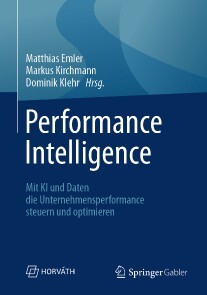
Performance Intelligence
Dieses Buch zeigt, wie Unternehmen durch die gezielte Verbindung von Künstlicher Intelligenz und Daten ihre Performance systematisch steuern und optimieren, um dadurch Wettbewerbsvorteile entlang der gesamten Wertschöpfungskette erzielen zu können. Unternehmen stehen heute unter erheblichem Kostendruck und müssen nachhaltig Effizienzpotenziale realisieren. Gleichzeitig steigt die Komplexität in globalen Märkten, wodurch digitale Entscheidungsunterstützung weiter an Relevanz gewinnt. In diesem Kontext spielen Künstliche Intelligenz und die Verfügbarkeit geeigneter Daten eine zentrale Rolle. Eine integrierte Strategie für KI und Daten ist hierbei ein wichtiger Erfolgsfaktor. Die Autor:innen bieten mit Beiträgen rund um Performance Intelligence einen praxisorientierten Rahmen und zeigen auf, dass Künstliche Intelligenz in Verbindung mit Daten in vielfältiger Weise und in allen Bereichen im Unternehmen Mehrwert stiftet. Das Werk gliedert sich in drei Teile: Der konzeptionelle Rahmen liefert hierbei eine fundierte Einführung in die grundlegenden Konzepte, Strategien und Betriebsmodelle für den Einsatz von KI im Performance Management. Im zweiten Teil stehen praxisnahe Anwendungsfälle aus zentralen Unternehmensfunktionen im Fokus – von Strategie und Controlling über Einkauf, Produktion und Vertrieb bis hin zu Finance und Supply Chain. Der abschließende Teil widmet sich organisatorischen Konzepten von KI-Transformationen und zeigt auf, wie Unternehmen durch gezielte Umsetzung und Verankerung langfristigen Erfolg sicherstellen können. Der Inhalt Konzeptioneller Rahmen – KI und DatenstrategieFunktionale KI-Anwendungsfälle und Erfolgsgeschichten entlang der WertschöpfungsketteOrganisatorische Umsetzung und Ausblick 1 Wie KI und Daten Performance Management und Optimierung verändern.- 2 KI- und Datenstrategie.- 3 KI- & Daten-Betriebsmodell: Organisation, Governance und Kultur als Schlüssel zum Erfolg.- 4 Von Compliance zur zukunftsorientierten KI-Adaption – Wie Unternehmen regulatorische Sicherheit gewährleisten und KI erfolgreich implementieren.- 5 Kernkomponenten der Künstlichen Intelligenz: Algorithmen, Daten und Infrastruktur.- 6 Integriertes Change-Management – Der Mensch im Fokus der KI-Technologie.- 7 KI als Gamechanger moderner Strategie- und Innovationsarbeit.- 8 Risikomanagement transformiert: Nutzung von künstlicher Intelligenz für Innovation und zukünftige Trends.- 9 Next Generation Performance Management - KI als Schlüssel zum Erfolg im Controlling.- 10 Einkauf – Optimierung entlang des Einkaufsprozesses mit KI und Daten.- 11 KI als Treiber für die nachhaltige Optimierung von Profitabilitäts- und Kostenstrukturen in der Produktion.- 12 Vertrieb & Pricing: Der Vertriebs-Funnel als Kompass für KI-gestützte Anwendungsfälle.- 13 KI als Wegbereiter zu Effizienz und Komplexitätsbeherrschung im Supply Chain Management.- 14 Finance und KI: Zwischen Effizienz und Herausforderung.- 15 Einbettung in die Unternehmenskultur.- 16 Entwicklung eines Target Operating Models für die erfolgreiche Wertschöpfung durch KI.- 17 Gesamtfazit: Ausarbeitung einer konkreten Roadmap als zentrale Basis für die Transformation.

Resiliente krisenrelevante Versorgungsnetze
Seit Beginn der SARS-Covid-Pandemie veranschaulichten Krisen und Katastrophen die Anfälligkeit der Versorgungsnetze von Gesellschaft und Wirtschaft. Pandemien erfordern die schnelle Versorgung mit medizinischer Schutzausrüstung, Testverfahren und Impfstoffen. Durch den Klimawandel bedingte Naturkatastrophen und Extremwetter, wie Überflutungen, langandauernde Vegetationsbrände oder sinkende Pegel der Wasserwege, verursachen materielle und finanzielle Schäden, aber auch schlimmstenfalls den Ausfall von Transportwegen. Menschliches Versagen, politische Konflikte oder Kriege führen zu Verzögerungen in den Distributionskanälen und zur Verknappung von krisenrelevanten Gütern. Das Projekt ResKriVer (Resiliente krisenrelevante Versorgungsnetze) hat Auswirkungen von für Deutschland antizipierbaren Krisen- und Katastrophensituation untersucht und Lösungsansätze entwickelt, um die Resilienz von Wirtschaft und Gesellschaft zu steigern. Projektfokus waren: Analyse und Simulation von Lieferketten krisenrelevanter GüterVerbesserung der Versorgung mit BlutkonservenUnterstützung von Krisenstäben bei der LagebilderhebungVerbesserung der Kommunikation mit der BevölkerungEntlastung von Kliniken durch telemedizinische Überwachung von Risikopatienten Neben der Analyse der Bedarfe, der Untersuchung der Umsetzbarkeit, der Realisierung von Prototypen und Demonstratoren wurde ein Ökosystem von digitalen Services entwickelt, die zukünftige Umsetzungen von resilienten Vorsorgemaßnahmen vereinfachen. Das Buch stellt die Ergebnisse in allgemeinverständlicher Form vor. Einleitung.- Rechtliche Rahmenbedingungen der Datenerhebung.- Erhebbarkeit von Daten.- Use Case: Versorgungsnetze von KRITIS am Beispiel von Rettungsdiensten.- Kollaboratives Lieferketten-Risikomanagement.- Modellierung, Erfassung und Analyse von Lieferketten.- Simulationsbasierte Evaluierung von Versorgungssicherheit in Liefernetzwerken.- Bedeutung von Lieferketten im Krisenmanagement.-Ressourcenmangel über Gebietskörperschaften hinweg ausgleichen.- Entwicklung und Evaluierung eines Notfallkonzepts zur Sicherstellung der Versorgung der Bevölkerung mit Blutprodukten im Fall von Pandemien und Katastrophen.- Social Media Monitoring in Krisensituationen.- KI-Technologie zur Unterstützung des Drohneneinsatzes bei Feuerwehren.- Prognose der Ausbreitung von Vegetationsbränden.- Informationsplattformarchitektur für resiliente krisenrelevante Versorgungsnetze.- Terminologie-Editor.- Templatebasierte Modellierung von Lieferketten.- Design Futuring trifft Akzeptanzforschung: Eine interdisziplinäre Brücke zu einer zukunftsgestaltenden Haltung.
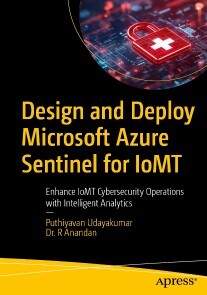
Design and Deploy Microsoft Azure Sentinel for IoMT
Microsoft Sentinel for Internet of Medical Things (IoMT) provides advanced threat detection, investigation, and automated response for connected medical devices, guaranteeing real-time protection in healthcare environments. The book guides you to deploy, and optimize Microsoft Sentinel specifically for IoMT environments, guaranteeing the protection of critical medical systems and patient data. The book starts with introducing the fundamental concepts of Sentinel, its role in securing IoMT, and the latest advancements in healthcare cybersecurity. Architecting and Deploying Microsoft Sentinel focuses on designing a Sentinel workspace tailored for IoMT, integrating medical device logs, and applying Zero Trust principles to secure connected healthcare environments. Engineering Microsoft Sentinel for Security Operations explores how security engineers can configure analytics, automate threat response, and optimize Security Operations Center (SOC) workflows to mitigate IoMT-specific threats, such as ransomware attacks on medical devices or unauthorized access to patient records. Finally, Threat Detection, Investigation, and Response provides practical techniques for security analysts, including crafting detection rules for IoMT anomalies, investigating incidents involving medical devices, and leveraging Kusto Query Language (KQL) to proactively hunt for threats in healthcare networks. By the end of this book, you will be equipped to design, implement, and operate a comprehensive security framework for IoMT environments using Microsoft Sentinel. What You Will Learn: Design and deploy a Microsoft Sentinel workspace tailored specifically for IoMT, including integrating medical device logs.Implementing Zero Trust security principles to safeguard connected healthcare systems.Gain practical skills in creating custom detection rules for IoMT devices, investigating security incidents involving medical systemsUnderstanding compliance with key healthcare regulations (such as HIPAA, GDPR, and FDA) Who This Book Is For: Azure Administrators, Network & security administrator. Chapter 1: Get Started with Microsoft Sentinel and IoMT.- Chapter 2: Architecting and Deploying Microsoft Sentinel.- Chapter 3: Engineering Microsoft Sentinel for Security Operations.- Chapter 4: Threat Detection, Investigation, and Response.

E-Books richtig nutzen - Digital Lesen leicht gemacht!
Schluss mit Halbwissen: Starten Sie dank dieses neutralen Leitfadens angstfrei ins digitale Lesen, vermeiden Sie den Vendor Lock-in und finden Sie sofort Tausende kostenlose E-Books. Sie wollen E-Books lesen, befürchten aber, dass der Einstieg „zu kompliziert, zu technisch oder zu unpersönlich“ ist? Dieser Ratgeber nimmt Ihnen alle Vorurteile und macht den digitalen Start einfacher, als Sie denken. Autor Wilhelm Menze liefert den neutralen Experten-Wegweiser durch den E-Book-Dschungel: Ohne Verkaufsabsicht, ohne Bindung an Amazon oder Tolino, erfahren Sie, wie Sie sicher, günstig und ohne Fehlkäufe sofort starten. Entdecken Sie, wie Sie hunderte Titel mitnehmen, ohne Kilogramm zu schleppen, die Schriftgröße anpassen – ideal bei müden Augen oder Sehschwäche – und jederzeit mit kostenlosen Klassikern loslesen. Was Sie in diesem Buch lernen: • Der angstfreie Start: In wenigen, überschaubaren Schritten kommen Sie mit kostenlosen Lese-Apps auf Ihrem bereits vorhandenen Smartphone oder Tablet in unter 30 Minuten zu Ihrem ersten E-Book. • Gerät oder App? Erfahren Sie, wann ein dedizierter E-Reader (z. B. Kindle, Tolino) mit augenschonendem E-Ink-Display und wochenlanger Akkulaufzeit die bessere Wahl ist, und wann Ihr Tablet oder Smartphone ausreicht. • Anbieter-Klarheit: Wir erklären die Unterschiede zwischen den dominierenden Systemen (Amazon Kindle und Tolino-Allianz) und zeigen Ihnen, wie Sie die richtige Wahl treffen, um Vendor Lock-in und teure Fehlkäufe zu vermeiden. • Anfängerfehler vermeiden: Erfahren Sie, wie Sie verhindern, das falsche Format (PDF statt EPUB oder Kindle statt Tolino) zu kaufen, und warum eine Leseprobe vor dem Kauf essenziell ist. • Kosten und Sparen: Finden Sie heraus, was E-Books kosten (durchschnittlich 20 Prozent weniger als gedruckte Ausgaben) und wie Sie über die Onleihe öffentliche Bibliotheks-E-Books kostenlos ausleihen können. • Ordnung im Chaos: Nutzen Sie die kostenlose Software Calibre, um Ihre digitale Bibliothek unabhängig vom Shop zu verwalten, Metadaten zu pflegen und regelmäßig Backups zu erstellen. • Format-Wissen: Das Buch erklärt die Vor- und Nachteile von EPUB (offen, flexibel), PDF (festes Layout, schlecht für kleine Displays) und AZW (Amazons proprietäres Format). • Zukunft des Lesens: Verstehen Sie, wie E-Books durch Anpassbarkeit und geringes Gewicht barrierefrei für Menschen mit körperlichen oder visuellen Einschränkungen sind. Dieser Ratgeber ist kein technisches Handbuch, sondern ein praktischer Wegweiser und eine Anleitung, die Ihnen hilft, die Vorteile des digitalen Lesens maximal zu nutzen.

Practical PHP APIs with Symfony
Ever wanted to construct a robust and efficient API architecture that revolves around operations? This focused pocket guide takes you through that process step-by-step, providing you with the knowledge to build an operation-oriented API using the PHP programming with the Symfony framework. Practical PHP APIs with Symfony is designed to provide you with a comprehensive understanding of how to create a single API endpoint that embraces the concept of operations. We will utilize the robust features of Symfony to build an environment where operations are the focal point of our API design. This focused guide assumes a certain understanding of the Symfony framework and is not intended as an introductory text to the topic. With this in mind, we will cover essential Symfony topics such as dependency injection features, security authentication and background operations with Symfony Messenger, all with the aim to get you up and running with operation-oriented APIs as quickly and easily as possible. You Will: Learn the principles of constructing an API architecture centered around operationsGain insights into the Symfony features that facilitate the development of operation-oriented APIsLearn how to create a single API endpoint that manages and executes various operationsExplore essential Symfony topics, including dependency injection, security authentication, and the use of Symfony Messenger for background operationsDevelop skills to discover, manage, and execute operations within your APIs, using practical examples for better comprehension This Book is For: Developers and software engineers with prior knowledge andunderstanding of the Symfony framework who wish to deepen their knowledge in building operation-oriented APIs, as well as those who are looking to know more about API design. Chapter 1. Crafting Inputs, Outputs, and Operations.- Chapter 2. Securing Operations.- Chapter 3. Background Execution of API Operations.- Chapter 4. Context-Specific Operations.- Chapter 5. Testing the API.

Delegates, Events, and Lambda Expressions in C#
Among the many features that make C# a powerful and versatile language, delegates, events, and lambda expressions stand out for their innovation and practical impact. This pocketbook will guide you to learn these core elements, offering a beginner-friendly yet thorough exploration through clear explanations, real-world code examples, Q&A sessions, and hands-on exercises. Diving into functional programming using delegates, implementing the observer design pattern with events, or streamlining your code with lambda expressions, this book helps you understand not just how these features work, but why they matter. You’ll learn how they interrelate and how they're used in modern C# development, including their role in LINQ and event-driven programming. Ideal for developers looking to sharpen their skills and gain confidence, this book ensures you walk away with the knowledge to write cleaner, more expressive, and maintainable C# code. What You Will Learn: Gain insights into advanced C# concepts with hands-on examplesWork with .NET 10, which supports C# 14, using Visual Studio Community EditionMaster delegates, events, and lambda expressions in real-world scenariosBuild confidence to tackle technical interviews in C# Who This Book is For: Developers and programmers in C# and .NET Chapter 1: Delegates.- Chapter 2: Events.- Chapter 3: Lambda Expressions.- Chapter 4: Bonus.- Appendix A: What's Next?.- Appendix B: Author's Other Books.

Linux CLI
Du lernst die Linux Befehlszeile praxisnah und leicht verständlich von Grund auf kennen. Schritt für Schritt arbeitest du Übungen direkt mit mir durch, verwaltest Dateien, nutzt wichtige Tools und schreibst erste Skripte. Am Ende bewegst du dich sicher und schnell im Terminal und automatisierst erste Aufgaben. Du lernst hier die Linux Befehlszeile von Grund auf kennen. Der Einstieg ist leicht verständlich und praxisorientiert, jede Übung baut logisch auf der vorherigen auf. So bekommst du ein Gefühl dafür, wie das System arbeitet und wie du Aufgaben mit wenigen Befehlen schneller erledigst als mit einer grafischen Oberfläche. Alle Übungsdateien kannst du herunterladen. Du arbeitest sie direkt mit mir gemeinsam durch. So lernst du schneller und verstehst jede Aufgabe besser. Du bewegst dich sicher im Dateisystem, legst Dateien und Ordner an, bearbeitest Inhalte und verwaltest sie effizient. Du nutzt wichtige Werkzeuge wie nano und vim, kombinierst Befehle mit Pipes und Umleitungen und schreibst erste eigene Skripte für wiederkehrende Aufgaben. Dabei verstehst du nicht nur die Anwendung, sondern auch die Hintergründe. Egal ob du Linux auf deinem Rechner, in einer virtuellen Maschine oder über WSL verwendest. Am Ende wirst du dich sicher, schnell und souverän auf der Kommandozeile bewegen. Auch erste Automatisierungen mit Cron gehören dazu und zeigen dir, wie viel Zeit du dir damit sparen kannst. Die Befehlszeile bleibt ein zentrales Werkzeug. Sie gibt dir Kontrolle, Geschwindigkeit und ein tiefes Verständnis für dein System. Dieser Kurs führt dich Schritt für Schritt dorthin. Viel Erfolg beim Lernen und Entdecken
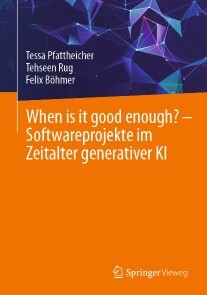
When is it good enough? - Softwareprojekte im Zeitalter generativer KI
Die Disruption durch Generative Künstliche Intelligenz verändert die Digitalisierung grundlegend und nachhaltig. Während klassische Systeme auf Regeln und Modellierbarkeit beruhen, stellen aktuell insbesondere Large Language Models diese Gewissheiten auf den Kopf. Aus unscharfen Faktoren muss nun ein neues Fundament gegossen werden: Nicht-Determinismus, dynamisch Veränderliches und natürliche Sprache. Dieses Buch lädt dazu ein, Unschärfe als Gestaltungsraum zu begreifen. In diesem Raum wird das lebendig, was wir früher ausgegrenzt haben: Ausnahmen, Unvorhergesehenes, Menschliches. Wir sind überzeugt: Wer diesen Raum mutig betritt, kann Digitalisierung neu denken. Anhand konkreter Beispiele entlang der gesamten Wertschöpfungskette – von Emotionen, Menschen und der Wirkung KI-generierter Antworten über Anforderungsanalyse bis zur Softwarearchitektur – zeigt das Buch, wie Unternehmen erfolgreiche Lösungen im Zeitalter von GenAI gestalten können. Ob Führungskraft, Teammitglied oder einfach neugierig auf das Morgen: Dieses Buch ist für alle, die die Zukunft nicht verpassen wollen. Einleitung - Willkommen im Zeitalter der Unschärfe.- Emotionen im Fokus.- Ambiguitätstoleranz – Der Umgang mit fehlender Eindeutigkeit.- Einschub – wie ticken Large Language Models (LLMs) eigentlich?.- Anforderungsanalyse – Navigieren im Nebel.- Product Ownership – Ownen der Unsicherheit.- UX für das Ungewisse.- Softwarearchitektur – Das Unkontrollierbare kontrollieren.- Software Engineering neu gedacht.- Qualität: Von exakter Gleichheit zu vertrauenswürdiger Unschärfe.- Sicherheit: Schutzmauern für LLMs errichten.- Toolgestützte Praxis.- Ausblick: Multimodalität und was noch kommt.- Ausblick Reloaded: eine Vision zur KI-nativen Organisation.-Zusammenfassung (the End).

Mastering Claude AI
Unlock the power of Claude, an advanced conversational AI assistant, and integrate it into your daily professional workflows and decision-making. This book offers a clear, relatable path, regardless of your technical background, from first prompt to advanced user, through a guided, real-life learning approach that explains the AI learning curve. You’ll start with an overview of Claude’s capabilities. In Part I, Claude Fundamentals introduces you to Claude AI in a clear, beginner-friendly way, using relatable comparisons and real examples. It guides you through initial setup, early conversations, and key lessons learned from trial and error. The section also explores prompt design, showing how skills evolve from basic to advanced, with practical before-and-after insights. Part II dives into hands-on applications—writing, research, coding, creativity, and data analysis—demonstrating how Claude can support a wide range of professional and personal use cases. Part III then introduces advanced strategies like prompt chaining and feature optimization, while Part IV explores professional domains including business, education, and artistic collaboration. In Part V, you’ll gain insights into troubleshooting, responsible AI use, and keeping up with rapid AI advancements. Finally, Part VI synthesizes the full journey, offering guidance on becoming a true power user and shaping the future of human-AI collaboration. Through transparent storytelling, tested frameworks, and actionable strategies, this practical guide will empower you to turn Claude AI from a tool into a transformative partner. What You Will Learn Use Claude AI effectively, even with no technical background or coding experience Master prompting techniques that evolve from simple queries to advanced, optimized conversations Apply Claude in writing, research, coding, creativity, and data analysis with real-life examples Explore Claude’s advanced features and integrate them into daily professional workflows and decision-making Who This Book Is For Creative professionals, educators, and business leaders exploring practical AI integration. It’s also ideal for entrepreneurs seeking new opportunities and knowledge workers aiming to boost productivity. PART I: CLAUDE FUNDAMENTALS.- Chapter 1: What Is Claude and Why Should You Care?.- Chapter 2: Getting Started: Your First Conversation with Claude.- Chapter 3: Understanding Claude's Capabilities and Limitations.- Chapter 4: The Art of Prompting: Getting Better Responses.- PART II: PRACTICAL APPLICATIONS.- Chapter 5: Writing and Communication Mastery.- Chapter 6: Research and Analysis Like a Pro.- Chapter 7: Coding and Programming with Claude.- Chapter 8: Creative Projects and Problem-Solving.- Chapter 9: Data Analysis and Visualization.- PART III: ADVANCED TECHNIQUES.- Chapter 10: Advanced Prompting Strategies.- Chapter 11: Working with Claude's Special Features.- Chapter 12: Integration and Workflow Development.- PART IV: PROFESSIONAL AND SPECIALIZED APPLICATIONS.- Chapter 13: Business and Professional Uses.- Chapter 14: Education and Learning Applications.- Chapter 15: Creative and Artistic Collaboration.- PART V: ADVANCED TOPICS AND TROUBLESHOOTING.- Chapter 16: Troubleshooting Common Problems.- Chapter 17: Ethics and Responsible AI Use.- Chapter 18: Staying Current with Claude's Evolution.- PART VI: EXCELLENCE AND BEYOND.- Chapter 19: Becoming a Claude Power User.- Chapter 20: The Future of Human-AI Collaboration.- Appendix A: Quick Reference Guide.- Appendix B: Resources for Continued Learning.- Appendix C: Templates and Frameworks.
